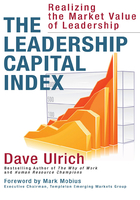
Moral Values and Ethical Judgment
In nearly every survey of effective leaders, integrity or values comes out on top. Integrity is also at the top of almost any investor leadership wish list. Integrity has a number of dimensions. Some of it is ethical behavior and doing what is right (however right is defined). Some of it is building trust by keeping promises and doing what you say you will do. And some of it is the ability to find meaning for yourself and create meaning for others.
FOLLOWING A CODE OF ETHICS
As one investor put it, "Leaders have to have personal integrity; once a crook, always a crook.” While this all-or-nothing thinking discounts forgiveness, it presents the case for how ethics underlies nearly all decision making.
Investors need confidence that the organizations and leaders they invest in will act ethically. Nonetheless, as desirable as ethics in business are held to be, 41% of U.S. workers said they observed unethical or illegal behavior on the job. Investors can receive reports on ethics of executives, but they can also monitor if leaders encourage ethical behavior in their organizations by looking for
Investors can receive reports on ethics of executives, but they can also monitor if leaders encourage ethical behavior in their organizations by looking for
 Written standards of ethical workplace conduct
Written standards of ethical workplace conduct
 Training on standards
Training on standards
 Company resources that provide advice on ethics issues
Company resources that provide advice on ethics issues
 A process to report potential violations confidentially or anonymously
A process to report potential violations confidentially or anonymously
 Performance evaluations on ethical conduct
Performance evaluations on ethical conduct
 Systems to disclose violators
Systems to disclose violators
In addition to building ethics into an organization culture, at a more personal level leaders act ethically when they take time to reflect on ethical danger zones and make sure that they resist ethical traps like cutting corners to deliver performance, setting unattainable goals, rationalizing behavior (“everyone is doing it”), using creative accounting, or letting up on the little things. Personal ethics can’t be approached as a gradient; you can’t be a little bit unethical any more than you can be a little bit pregnant. One leader cannot be "more ethical” than another, but being known to be unethical quickly removes a leader from investment consideration.
Personal ethics can’t be approached as a gradient; you can’t be a little bit unethical any more than you can be a little bit pregnant. One leader cannot be "more ethical” than another, but being known to be unethical quickly removes a leader from investment consideration.
BUILDING TRUST
Trustworthiness means predictably keeping promises by moderating expectations, by consistently delivering on agreements, or by exercising good judgment—which isn’t always obvious or straightforward. As an example of the pitfalls, consider the cement company that had hung million-dollar paintings in the lobby. When an investor asked the leadership why a cement company would present that sort of display and if it was consistent with their company brand, industry, and purpose, they quickly sold off the paintings … and used the money to elaborately renovate the reception area. Both of these poor judgments reflect a lack of trust with investor capital. And they didn’t understand why the investor wasn’t thrilled when they explained how they had taken his feedback.
Leaders who build trust manage expectations by promising less and delivering more. The reverse is dangerous. For example, when one excellent leader promised 20% revenue growth and 15% profitability (both far beyond industry standards) and then delivered 15% revenue and 10% profitability, it was taken as falling short of expectations, when in fact the firm still outperformed industry average. Investors lost confidence in this leader because of the projections, taking them as broken promises rather than aspirations.
Leaders who build trust respond to investors in a timely way. One investor became very frustrated with a senior leader who simply would not return e-mail messages or phone calls. The investor interpreted this as a lack of respect, and it eroded the trust that the investor had in the leader, causing the investor to move money elsewhere.
Investors trust leaders who are transparent. Problems are bad, but cover-ups are worse. For example, when one organization had a major disruption on the product introduction delivery time, the leader contacted significant investors to share with them the delay and ways to resolve the problem. The investors, while not pleased, appreciated the transparency. Leaders who try to run and hide from mistakes often end up with cynical and suspicious investors.
FINDING PERSONAL MEANING
Most people seek meaning in their lives. Investors favor leaders who care deeply about something beyond themselves, who bring meaning into the workplace, and who help employees find meaning from the work they do (as discussed in Chapter 6).
When investors see leaders who operate out of a set of deeply held personal values, they are more likely to have confidence in those leaders. Leaders can become models of meaning making by using their strengths at work, by aligning their personal purpose with the organization’s purpose (see Chapter 7), by encouraging positive relationships and teams at work (see Chapter 6), and by demonstrating how to learn and exhibiting a growth mindset.
Possible indicators:
 Does the leader encourage a code of ethics to shape behavior in the company?
Does the leader encourage a code of ethics to shape behavior in the company?
 Does the leader evoke personal trust from key stakeholders?
Does the leader evoke personal trust from key stakeholders?
 Does the leader create a sense of meaning in the workplace?
Does the leader create a sense of meaning in the workplace?